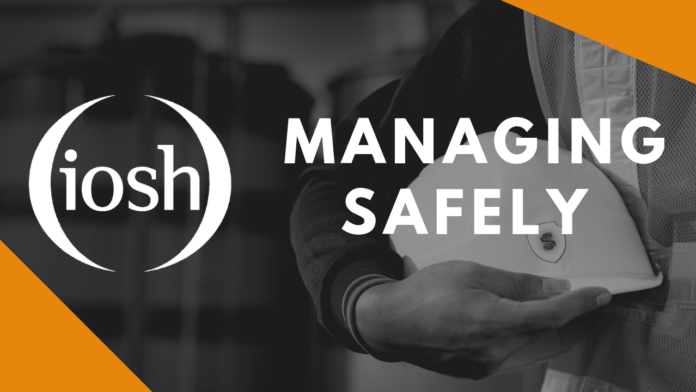Introduction
In today’s workplace, safety is a top priority for organizations across all sectors. The IOSH Managing Safely course has emerged as a leading program, designed to equip managers and supervisors with essential knowledge and skills for maintaining a safe work environment. This course not only promotes a culture of safety but also ensures legal compliance and enhances organizational efficiency. This article delves into the IOSH Managing Safely course, its structure, benefits, and why it is crucial for every manager.
What is IOSH Managing Safely?
IOSH Managing Safely is a widely recognized course aimed at managers and supervisors, giving them a solid grounding in health and safety management. Offered by IOSH, the world’s largest membership body for health and safety professionals, this course is tailored to help participants understand their responsibilities in keeping the workplace safe.
- Target Audience: This course is ideal for managers, supervisors, and team leaders in any industry.
- Course Duration: Typically a 3 to 4-day course, though flexible options are available.
- Certification: Upon successful completion, participants receive an IOSH Managing Safely certificate, recognized worldwide.
Objectives of IOSH Managing Safely
The primary aim of the IOSH Managing Safely course is to enable participants to manage health and safety effectively within their teams. Key objectives include:
- Understanding Responsibilities: Helping managers and supervisors understand their roles in fostering a safe workplace.
- Risk Identification: Teaching how to identify hazards and assess risks in various situations.
- Accident Prevention: Educating on measures to prevent workplace accidents and injuries.
- Promoting a Safety Culture: Encouraging managers to embed a culture of safety within their teams.
Course Structure: What to Expect in IOSH Managing Safely
The IOSH Managing Safely course is divided into core modules, each focusing on a different aspect of health and safety management.
Introduction to Managing Safely
This initial module explains the importance of health and safety management in the workplace.
- Core Concepts: Health and safety definitions, reasons for maintaining safety, and the role of managers.
- Legal Obligations: Understanding legal responsibilities and implications for organizations.
Assessing Risks
Risk assessment is crucial in any work environment. This module equips participants with the knowledge to identify potential hazards.
- Risk Identification: Practical methods to recognize hazards and understand their potential impact.
- Risk Assessment Techniques: Step-by-step instructions on conducting risk assessments and determining risk levels.
- Prioritizing Risks: Ranking risks based on severity to allocate resources effectively.
Controlling Risks
After identifying risks, the next step is to control them. This module provides practical tools to mitigate risks effectively.
- Hierarchy of Controls: Learning different control methods from elimination to personal protective equipment (PPE).
- Effective Control Measures: Selecting the right control measures based on risk severity.
- Practical Application: Implementing controls in real-life workplace scenarios.
Understanding Responsibilities
Managers must understand their legal and organizational responsibilities related to health and safety.
- Legal Compliance: Detailed information on relevant health and safety laws and standards.
- Role of Supervisors and Managers: Clarifying specific responsibilities for team leaders and managers.
- Consequences of Non-Compliance: Insights into potential penalties and impacts on business reputation.
Module 5: Investigating Incidents
Understanding how to investigate incidents is crucial for preventing future occurrences.
- Incident Investigation: Learning the steps for a thorough and effective investigation.
- Root Cause Analysis: Identifying underlying causes of incidents rather than just surface-level factors.
- Reporting and Documentation: Best practices for maintaining accurate records and reporting findings.
Measuring Performance
Effective safety management involves regular evaluation. This module focuses on methods for monitoring and improving health and safety performance.
- Performance Metrics: Key indicators to measure safety performance within teams.
- Continuous Improvement: Encouraging a cycle of evaluation and improvement for ongoing safety.
- Feedback and Reporting: Effective reporting systems to track and analyze performance data.
Protecting Our Environment
Environmental awareness is increasingly essential in workplace safety. This final module addresses environmental responsibilities.
- Environmental Impact: Understanding the organization’s impact on the environment.
- Waste Management and Pollution Control: Practices to minimize waste and reduce pollution.
- Sustainable Practices: Encouraging managers to implement eco-friendly practices in the workplace.
Benefits of IOSH Managing Safely Certification
The IOSH Managing Safely course provides numerous advantages to both individuals and organizations. Here’s a closer look at the benefits:
Enhancing Workplace Safety
The course instills a proactive approach to safety, helping managers identify risks before they lead to accidents. With better risk management, organizations can significantly reduce workplace accidents.
Compliance with Legal Standards
IOSH Managing Safely ensures managers are knowledgeable about legal standards, enabling them to keep their organizations compliant with safety regulations. This minimizes the risk of legal issues, fines, or penalties due to non-compliance.
Boosting Employee Morale
A safe workplace promotes employee confidence and satisfaction. By reducing risks, managers contribute to a positive work environment where employees feel protected and valued.
Financial Benefits
Effective safety management can reduce costly incidents and related expenses, such as worker compensation and legal fees. Organizations that prioritize safety tend to have lower accident rates, leading to financial savings over time.
Building a Safety Culture
The IOSH course encourages managers to advocate for safety at all levels, helping to foster a culture of safety within the organization. This culture of safety ensures that every team member understands and respects safety practices.
How to Obtain IOSH Managing Safely Certification
Obtaining IOSH Managing Safely certification is straightforward. Here’s a brief guide on how to get certified:
- Find an Accredited Provider: Numerous training providers offer the IOSH Managing Safely course both in-person and online.
- Course Registration: Enroll in a course that suits your schedule. Online options allow you to learn at your own pace.
- Attend Training Sessions: Engage in each module, taking advantage of interactive sessions, case studies, and assessments.
- Complete Assessments: The course includes a final assessment, usually a combination of multiple-choice questions and practical exercises.
- Receive Certification: Upon passing the assessments, you’ll be awarded an IOSH Managing Safely certificate.
Who Should Take the IOSH Managing Safely Course?
The course is suitable for individuals in various industries, particularly those in management or supervisory roles. Key groups who can benefit include:
- Managers and Supervisors: Especially those responsible for overseeing teams and enforcing health and safety protocols.
- Team Leaders: Team leaders gain valuable insights into managing the safety of their teams.
- Small Business Owners: For small business owners, this course is an excellent tool to understand health and safety practices and comply with legal standards.
- Human Resources Professionals: HR professionals involved in training or safety policy development will find this course beneficial.
Conclusion
The IOSH Managing Safely course is an invaluable resource for managers seeking to enhance their understanding of workplace health and safety. Through its structured modules, the course equips individuals with the knowledge and tools needed to identify and control risks, ensure legal compliance, and promote a positive safety culture within their organizations. Not only does IOSH Managing Safely benefit managers personally by broadening their skill set, but it also contributes to the overall success and reputation of their organization. With the training’s focus on practical application, certified individuals are well-prepared to handle safety issues confidently, making the IOSH Managing Safely course a worthwhile investment for any organization focused on workplace safety.
Check out new and latest article to see by clicking here.

